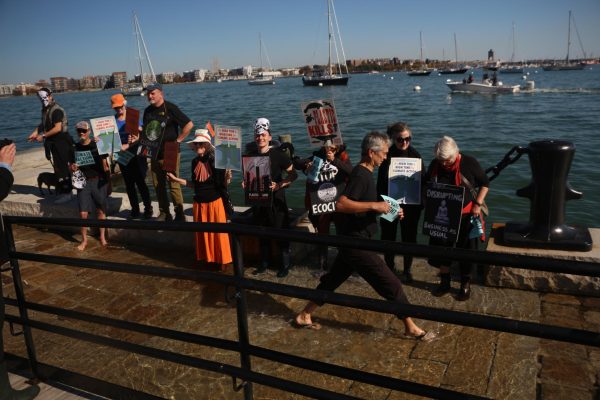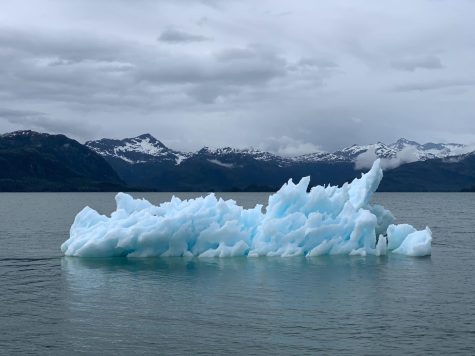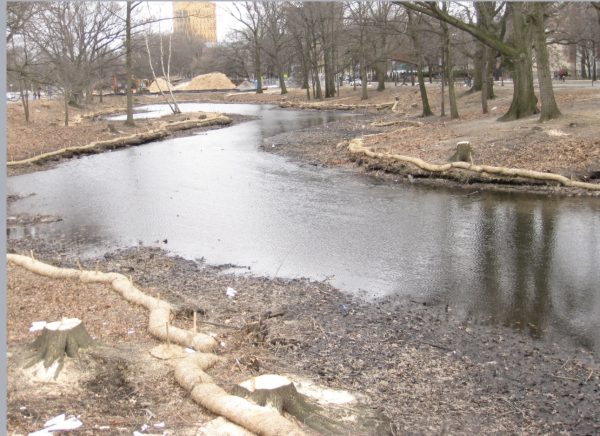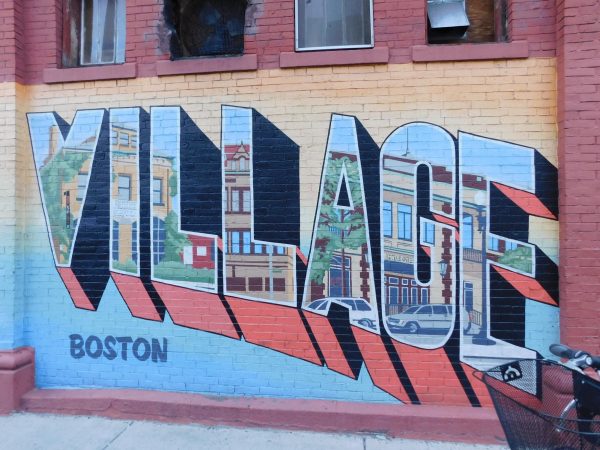Beyond walls: a new solution to sea level rise and the Boston architect behind it
A new movement that is grounded in reality and far from utopian, though the concept will require paradigm shifts in how stakeholders contend with climate change.
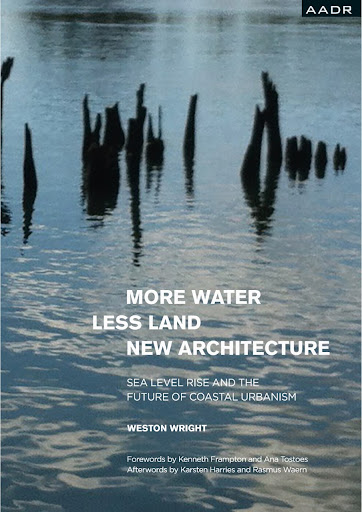
The front cover of Boston-based architect Weston Wright’s new book, published in April 2022 and now available for purchase on Amazon.
East Boston’s Clippership Wharf is currently home to a 7-acre development of apartments and condominiums, which were built with fairly conventional standards, and with minor and traditional sea level rise stopgaps, such as flood barriers and salt marshes. The buildings were built on the highest part of the site, with no apartments on the ground floor, in order to mitigate the plausible event of flooding.
Back in 2013, Boston-based architect Weston Wright began designs for a proposal with a radically different vision for the waterfront property. His designs allowed for integration between the buildings and the water, using a new, amphibian kind of architecture.
Despite much interest, the property was sold to a different developer who hired a different architecture firm. But Wright’s designs for Clippership Wharf became the catalyst behind his new book, More Water Less Land New Architecture – published in April 2022 – and the first step in a movement that is grounded in reality and far from utopian, though the concept will require a paradigm shift in how stakeholders contend with climate change.
“We should not expect conventional architectural form and materiality to adapt to conditions that it never contemplated,” says Wright.
In the wake of climate change and sea level rise, humanity’s most obvious solution would be a mass migration inland. But humans have an intrinsic and perennial tendency to gravitate toward coastlines. In order to square these two facts, Wright proposes a reimagining among architects, engineers, and urbanists – thinking beyond sea walls toward more creative and long-term solutions.
“Humans want to live near water, we want to live on that edge, and this is a way to continue to do that,” says Wright. “It’s not that the ideas or the polemic or the architectural strategy that I land on in the book is the solution. It’s a solution, a public service announcement to bring to the attention the unfolding, or at least the anticipated unfolding, of water’s expansion.”
Wright grew up in Oak Park, Illinois, home to the Frank Lloyd Wright studio (though the two architects are not related), as well as the birthplace of other famous architects like Louis Sauer and John Van Bergen.
When Wright was in his early 20s, his father, Rodney Wright, began working on a solar project in Soldier’s Grove, a small river village in southwest Wisconsin that was habitually flooded by the Kickapoo River. At the time, Wright was in architecture school but would spend summers working on the Soldier’s Grove project.
“It was an early exposure to the destruction by water on a building,” says Wright, and it greatly influenced his evolution as a problem-solving architect.
By the time he was making designs for Clippership, the springboard for this recently published book, Wright had realized that the Boston Harbor was indeed a model, a microcosm of the challenges and possible solutions that coastal communities all around the world would face.
So, in a world of more water and less land – what does new architecture look like? Wright coins the system as a whole “wet typology,” and in his book also coins the terms “wet architecture” and “wet urbanism.” “Wet typology” – the umbrella term under which falls “wet architecture” and its plural form, “wet urbanism” – is moveable, range-bound (meaning it remains close to dry land), and amphibian in design.
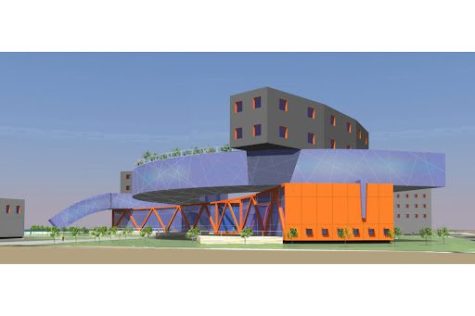
These terms are the beginnings of new ways of thinking about how humans will put down roots and permanence in a world of more water, less land, and erratic weather patterns.
Looking back in order to look forward, More Water Less Land New Architecture spans from the Neolithic era all the way to contemporary thought, searching history for the most promising resiliency practices and contending with the disturbing challenges flooding will bring. But at its heart, the book is offering up a radical new idea that promises loyalty to the thing most in danger in the wake of sea level rise: community.
“I tried to go around the world and find ways and information to render the idea null, void, and utopian. But I couldn’t. I found justification for this new type of architecture everywhere.”
The book is predicated on three facts: sea level rise is occurring, it will continue to occur, and at some point, it will remain. Rather than trying to keep the water at bay, Wright proposes a more holistic architectural philosophy that would be integrated with water and amid water. It’s founded on the premise: “the water is here…now what?”
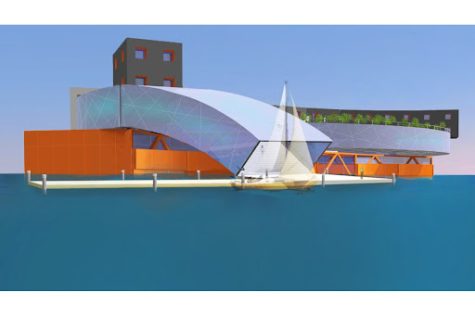
Though it is fueled by the predictions of today’s scientists, the book does not capitalize on the zeitgeist of the current day and age. It strays away from appealing solely to information that will become outdated and obsolete and instead offers an architecture that can evolve with the evolving climate.
This mirrors the way that many climate scientists and researchers work as well: playing the long game.
“Ironically,” says John Fasullo, a climate science generalist studying climate variability and change at the National Center for Atmospheric Research in Boulder, Colorado, “the long-term [for climate change] is actually easier to predict than the relatively small variations over the next couple of years.” The reason for that, he explains, is because when dealing with the long-term, the equation transitions from looking at particular events to looking more generally at the amount of CO2 in the atmosphere.
So, what are the long-term predictions? Sea level is expected to continue to increase, and furthermore – it is expected to continue to increase non-linearly. What that means, says Fasullo, is that “it’s not only going up, but it’s going to increase every year in how much it goes up.”
Although it’s true that different locations are impacted differently, when it comes to coastal climate change, Fasullo says, “vulnerability is complicated. It’s not only a function of how much change we expect but also how well the infrastructure is built to withstand those changes.”
With the right infrastructure, even the coasts that are most impacted by climate change could become as resilient as – if not more than – those that are less prone to heavy storms and sea level rise.
Architecture plays a significant role in the infrastructure of a community. And placing architecture amid water is not new. But what renders “wet typology” distinct from its utopian predecessor, the floating city, is wet typology’s social contract.
“What differentiates wet typology from all former conceptions of architecture amid water is its promise to stay in close proximity to land all the time, in perpetuity.”
Floating cities, on the other hand, are immovable and far from dry land, giving a sense of a moat or gated community. Floating cities are also, says Wright, not amphibian in design and so are far less equipped to deal with the effects of climate change.
“When you look at a lot of proposed – and some even under construction – floating concepts, what they have done is they have simply migrated a land-based form and placed it atop the water,” Wright explains. “That, in my mind, is misguided…and will not work long-term amid the volatility and dynamic characteristics of water, particularly salt water.”
A floating city neither unites a sundered community nor does it preserve its culture and sense of place. It is, by nature, atomistic: creating islands rather than communities.
Although “wet architecture” is a radically new idea, it is committed to maintaining culture, history, and belonging. It offers continuity in how humans have lived and will live in a world of climate change.
“Beyond the objectification of a wet typology,” says Wright, “is its social obligation to a coastal settlement; the perpetuation, unification, and celebration of place.”
To read more, find the book on Amazon.


